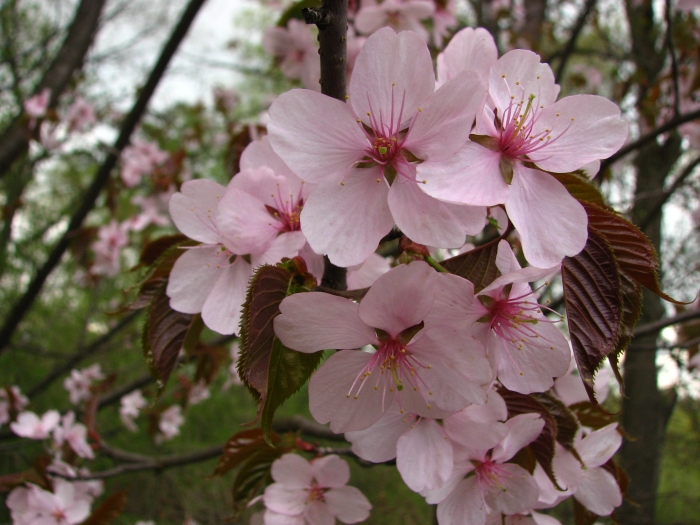Sargent’s Cherry
(Prunus sargentii)
Sargent’s Cherry (Prunus sargentii)
/
/

Kor!An (Андрей Корзун)
CC BY-SA 3.0































Estimated Native Range
Summary
Sargent’s Cherry is valued for its fast growth, ornamental value, and hardiness, making it an excellent choice for urban planting, street trees, and residential gardens. Its ability to tolerate wind and moderate drought conditions adds to its versatility in landscape design. The tree’s attractive reddish-bronze new growth and vibrant pink spring blossoms provide visual interest, while its tolerance for transplanting and resistance to cold make it a practical selection for northern climates. In cultivation, it thrives best in full sun to part shade and prefers well-drained soil with consistent moisture.CC BY-SA 4.0
Plant Description
- Plant Type: Tree
- Height: 20-30 feet
- Width: 20-30 feet
- Growth Rate: Moderate
- Flower Color: Pink
- Flowering Season: Spring
- Leaf Retention: Deciduous
Growth Requirements
- Sun: Full Sun, Part Shade
- Water: Medium
- Drainage: Medium
Common Uses
Bee Garden, Bird Garden, Butterfly Garden, Edible*Disclaimer: Easyscape's listed plant edibility is for informational use. Always verify the safety and proper identification of any plant before consumption., Fragrant, Rabbit Resistant, Showy Flowers, Street Planting
Natural Habitat
Volcanic soils of mountainous regions and forest edges
Other Names
Common Names: Sargent Cherry , North Japanese Hill Cherry , Berg-Kirsche , Sachalin-Kirsche , Cerisier De Sargent , Bergkörsbär , 산벚나무 , 산벗나무
Scientific Names: Prunus sargentii , Cerasus sachalinensis , Cerasus sargentii , Prunus sargentii var. sargentii , Cerasus sargentii f. pubescens , Prunus serrulata var. sachalinensis , Prunus sargentii f. pubescens , Cerasus sargentii var. akimotoi , Prunus densifolia , Prunus floribunda
GBIF Accepted Name: Prunus sargentii Rehder